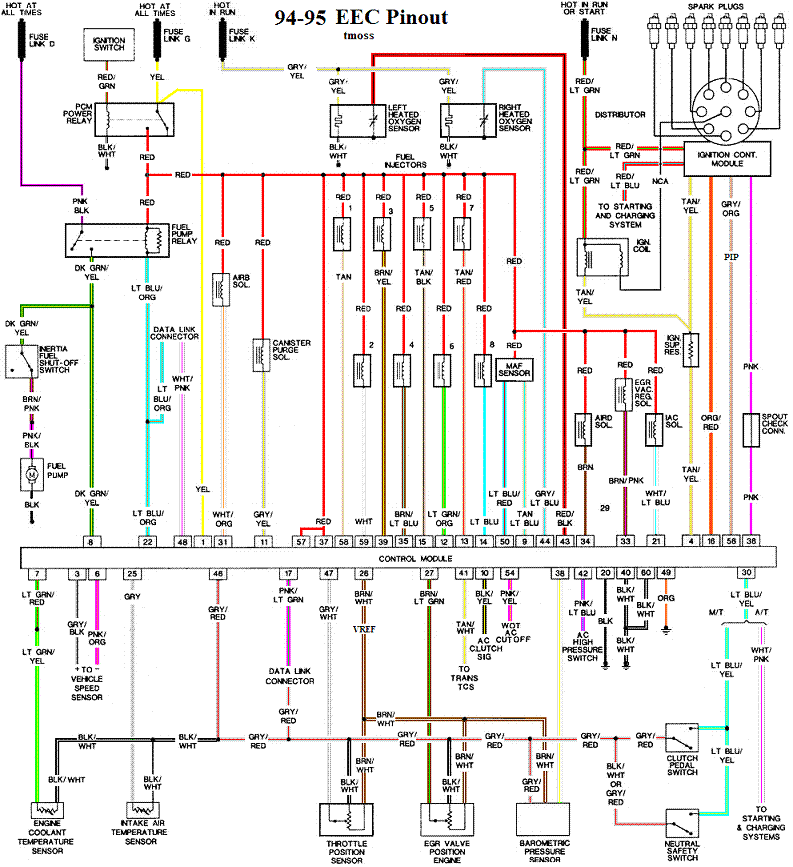- May 23, 2017
- 13
- 1
- 3
Hi and thanks for reading. I'm new to this and hoping for a little direction.
I have the classic cranks but not start and have been through many checklists (jriccher) if he is still active. Very helpful.
I have spark off the coul and off plug. 38 pounds of fuel pressure .. Pumps comes on for a few seconds and stops at 38 according to the pressure tester. I have 12 volts on the red wire of one injector. Haven't tested them all. TPS has a 4.95v reference, ohms at 1.2 and with key on tps is at .94.
My eec relay is good and has all of the right specs per the dvom.
My problem I THINK is this... Or my symptom rather. With a noid light on the injector I've check that has 12v on the red wire, when I spin the car over it DOES pulse.. But only intermittently. It will pulse for a few seconds and then stay lit for a few seconds and then pulse again. Back and forth like that. As it is doing this, I can hear the fuel pump relay under the seat clicking on and off.
I'm thinking next I should pull the intake to access all injectors and check for 12v at all red wires on the injectors and then check the injector pins on the computer.
Does anyone have a thought on that? I've found threads of no pulse, of noid light staying lit and etc, but can't find anything on pulsing and then staying lit back and forth.
Thanks!
I have the classic cranks but not start and have been through many checklists (jriccher) if he is still active. Very helpful.
I have spark off the coul and off plug. 38 pounds of fuel pressure .. Pumps comes on for a few seconds and stops at 38 according to the pressure tester. I have 12 volts on the red wire of one injector. Haven't tested them all. TPS has a 4.95v reference, ohms at 1.2 and with key on tps is at .94.
My eec relay is good and has all of the right specs per the dvom.
My problem I THINK is this... Or my symptom rather. With a noid light on the injector I've check that has 12v on the red wire, when I spin the car over it DOES pulse.. But only intermittently. It will pulse for a few seconds and then stay lit for a few seconds and then pulse again. Back and forth like that. As it is doing this, I can hear the fuel pump relay under the seat clicking on and off.
I'm thinking next I should pull the intake to access all injectors and check for 12v at all red wires on the injectors and then check the injector pins on the computer.
Does anyone have a thought on that? I've found threads of no pulse, of noid light staying lit and etc, but can't find anything on pulsing and then staying lit back and forth.
Thanks!





